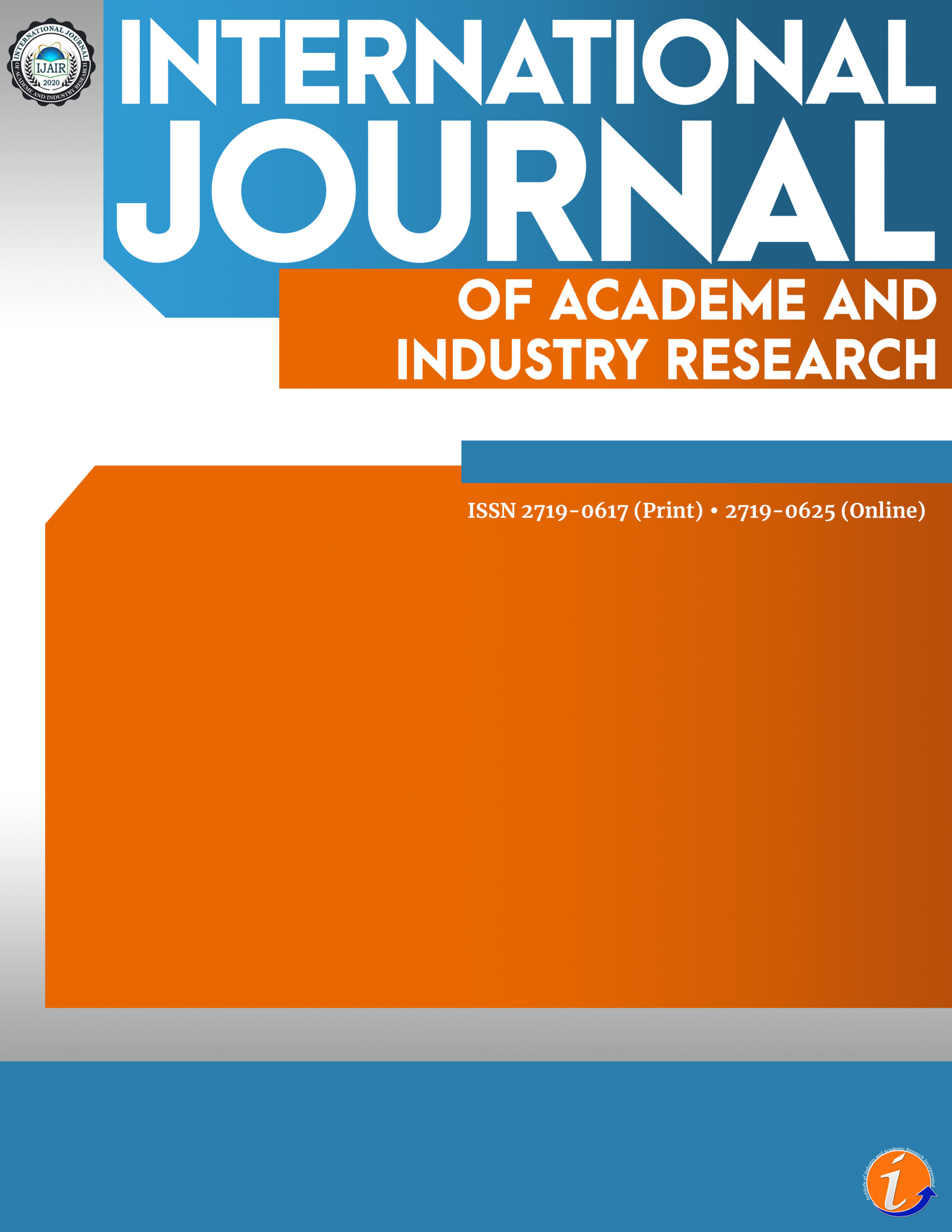This study examines the impact of augmented reality (AR) BeautyCam features on consumer behavior in e-commerce, focusing on reuse intention and purchase intention. Key influencing factors include system quality and reality congruence, which affect consumer perceptions through media usefulness and choice confidence. Using a quantitative approach, data from 178 respondents were analyzed via Partial Least Squares (PLS) in SMART PLS 3.9.2. The findings confirm that higher system quality and reality congruence enhance media usefulness, while reality congruence and media usefulness strengthen choice confidence, leading to greater reuse and purchase intentions. These results highlight the importance of optimizing AR features to improve user engagement and decision-making. Practical recommendations are provided to help e-commerce platforms enhance AR-based shopping experiences, increasing consumer trust and purchase likelihood.
cognitive response, behavioral consumer, augmented reality
Cinthya Audrey Purwadi. Widya Mandala Catholic University Surabaya
Yulika Rosita Agrippina. Corresponding author. Widya Mandala Catholic University Surabaya. Email: agrippina@ukwms.ac.id
"All authors equally contributed to the conception, design, preparation, data gathering and analysis, and writing of the manuscript. All authors read and approved the final manuscript."
No potential conflict of interest was reported by the author(s).
This work was not supported by any funding while the APC is paid by Widya Mandala Catholic University Surabaya.
This study was conducted in accordance with the ethical guidelines set by Widya Mandala Catholic University Surabaya. The conduct of this study has been approved and given relative clearance(s) by Widya Mandala Catholic University Surabaya.
AI tools were not used in writing this paper.
Ahidat, A. (2024, May 3). 5 E-Commerce dengan Pengunjung Terbanyak Kuartal I 2024. Https://Databoks.Katadata.Co.Id/Datapublish/2024/05/03/5-e-Commerce-Dengan-Pengunjung-Terbanyak-Kuartal-i-2024.
Ajzen, I. (1991). The theory of planned behavior. Organizational Behavior and Human Decision Processes, 50(2), 179-211. https://doi.org/10.1016/0749-5978(91)90020-T
Andrews, D. (2013). The interplay of information diagnosticity and need for cognitive closure in determining choice confidence. Psychology and Marketing, 30(9), 749–764. https://doi.org/10.1002/mar.20643
Bandura, A. (1986). Social foundations of thought and action. Englewood Cliffs, NJ 1986.23-28, 2. https://doi.org/10.1146/annurev.psych.52.1.1
Belch, G. E., & Belch, M. A. (2003). Advertising and promotion, an integrated marketing communication perspective (6th ed.). McGraw Hill.
Beuckels, E. & Hudders, L. (2016). An experimental study to investigate the impact of image interactivity on the perception of luxury in an online shopping context. Journal of Retailing and Consumer Services, 33, 135–142. https://doi.org/10.1016/j.jretconser.2016.08.014
Carmigniani, J., Furht, B., Anisetti, M., Ceravolo, P., Damiani, E., & Ivkovic, M. (2011). Augmented reality technologies, systems and applications. Multimedia Tools and Applications, 51(1), 341–377. https://doi.org/10.1007/s11042-010-0660-6
Choi, Y., & Sun, L. (2016). Reuse intention of third-party online payments: A focus on the sustainable factors of Alipay. Sustainability, 8(2), 147. https://doi.org/10.3390/su8020147
Chuah, S. H.-W., Rauschnabel, P. A., Krey, N., Nguyen, B., Ramayah, T., & Lade, S. (2016). Wearable technologies: The role of usefulness and visibility in smartwatch adoption. Computers in Human Behavior, 65, 276–284. https://doi.org/10.1016/j.chb.2016.07.047
Daft, R. L., & Lengel, R. H. (1986). Organizational information requirements, media richness, and structural design. Management Science, 32(5), 554-571. https://doi.org/10.1287/mnsc.32.5.554
Davis, F.D. (1989). Perceived usefulness, perceived ease of use, and user acceptance of information technology. MIS Quarterly, 13(3), 319-340. https://doi.org/10.2307/249008
Daugherty, T. Logan, K., Chu, S., & Huang, S. (2008). Understanding consumer perceptions of advertising: A theoretical framework of attitude and confidence. American Academy of Advertising Conference Proceedings, 308-312.
Flavián, C., Gurrea, R., & Orús, C. (2016). Choice confidence in the webrooming purchase process: The impact of online positive reviews and the motivation to touch. Journal of Consumer Behaviour, 15(5), 459–476. https://doi.org/10.1002/cb.1585
Gable, G., & Sedera, D. (2004). A factor and structural equation analysis of the enterprise systems success measurement model. In Proceedings of the 25th International Conference on Information Systems.
Ghozali, L., & Latan, H. (2015). Partial least squares: Konsep, teknik, dan aplikasi menggunakan program smart PLS 3.0.
Gorla, N., Somers, T. M., & Wong, B. (2010). Organizational impact of system quality, information quality, and service quality. The Journal of Strategic Information Systems, 19(3), 207–228. https://doi.org/10.1016/j.jsis.2010.05.001
Hair, J. F., Hult, G. T. M., Ringle, C. M., & Sarstedt, M. (2014). A Primer On Partial Least Squares Structural Equation Modeling (PLS-SEM). SAGE.
He, D., Lu, Y., & Zhou, D. (2008). Empirical study of consumers’ purchases intentions in C2C electronic commerce. Tsinghua Science and Technology, 13(3), 287–292. https://doi.org/10.1016/S1007-0214(08)70046-4
Hellier, P. K., Geursen, G. M., Carr, R. A., & Rickard, J. A. (2003). Customer repurchase intention. European Journal of Marketing, 37(11/12), 1762–1800. https://doi.org/10.1108/03090560310495456
Hernández-Serrano, O., Ghiţă, A., Fernández-Ruiz, J., Monràs, M., Gual, A., Gacto, M., Porras-García, B., Ferrer-García, M., & Gutiérrez-Maldonado, J. (2021). Determinants of cue-elicited alcohol craving and perceived realism in virtual reality environments among patients with alcohol use disorder. Journal of Clinical Medicine, 10(11). https://doi.org/10.3390/jcm10112241
Javornik, A. (2016). Augmented reality: Research agenda for studying the impact of its media characteristics on consumer behaviour. Journal of Retailing and Consumer Services, 30, 252–261. https://doi.org/10.1016/j.jretconser.2016.02.004
Kim, J., & Forsythe, S. (2008). Adoption of virtual try-on technology for online apparel shopping. Journal of Interactive Marketing, 22(2), 45–59. https://doi.org/10.1002/dir.20113
Kim, K., Hwang, J., Zo, H., & Lee, H. (2016). Understanding users’ continuance intention toward smartphone augmented reality applications. Information Development, 32(2), 161–174. https://doi.org/10.1177/0266666914535119
Kotler, & Armstrong. (2016). Principles of Marketing Sixteenth Edition Global Edition. Pearson Education Limited.
Kotler, P., & Keller, L. K. (2016). Marketing Management (15th ed.). Pearson Education.
Kowalczuk, P. (2018). Consumer acceptance of smart speakers: a mixed methods approach. Journal of Research in Interactive Marketing, 12(4), 418–431. https://doi.org/10.1108/JRIM-01-2018-0022
Kowalczuk, P., Siepmann, C., & Adler, J. (2021). Cognitive, affective, and behavioral consumer responses to augmented reality in e-commerce: A comparative study. Journal of Business Research, 124, 357–373. https://doi.org/10.1016/j.jbusres.2020.10.050
Mangold, W. G., & Faulds, D. J. (2017). Social media: The new hybrid element of the promotion mix. Business Horizons, 50(4), 291-299. https://doi.org/10.1016/j.bushor.2007.01.006
Miarso, Y. (2004). Menyemai Benih Teknologi Pendidikan (2nd ed.). Prenadamedia Group.
Moh. Pabundu Tika. (2015). Metode Penelitian Geografi. PT Bumi Aksara.
Morwitz, V. G., Steckel, J. H., & Gupta, A. (2007). When do purchase intentions predict sales? International Journal of Forecasting, 23(3), 347–364. https://doi.org/10.1016/j.ijforecast.2007.05.015
Mothersbaugh, D. L., & Hawkins, D. I. (2010). Consumer behavior: Building marketing strategy (10th ed.).
Mowen, J. C., & Minor, M. (2012). Perilaku Konsumen. Erlangga.
Nurhadi, M. (2023). Proporsi belanja online dan offline mahasiswa prodi matematika Universitas Jambi menggunakan uji binomial. 2(1), 45-50. https://doi.org/10.22437/multiproximity.v2i1.25067
Pantano, E., Rese, A., & Baier, D. (2017). Enhancing the online decision-making process by using augmented reality: A two country comparison of youth markets. Journal of Retailing and Consumer Services, 38, 81–95.
Pavlou, P. (2003). Consumer acceptance of electronic commerce: Integrating trust and risk with the technology acceptance model. International Journal of Electronic Commerce, 7, 101–134.
Petty, R. E., & Cacioppo, J. T. (1986). The elaboration likelihood model of persuasion. Advances in Experimental Social Psychology, 19, 123-205. https://doi.org/10.1016/S0065-2601(08)60214-2
Poushneh, A. (2018). Augmented reality in retail: A trade-off between user’s control of access to personal information and augmentation quality. Journal of Retailing and Consumer Services, 41, 169–176. https://doi.org/10.1016/j.jretconser.2017.12.010
Rauschnabel, P. A. (2018). Virtually enhancing the real world with holograms: An exploration of expected gratifications of using augmented reality smart glasses. Psychology & Marketing, 35(8), 557–572. https://doi.org/10.1002/mar.21106
Rezaei, S., & Amin, M. (2013). Exploring online repurchase behavioural intention of university students in Malaysia. J. for Global Business Advancement, 6(2), 92. https://doi.org/10.1504/JGBA.2013.053561
Schwarz, N. (2012). Feelings-as-information theory. In Handbook of Theories of Social Psychology: Volume 1 (pp. 289–308). SAGE Publications Ltd. https://doi.org/10.4135/9781446249215.n15
Sekaran, U., & Bougie, R. (2016). Research Methods for Business: A Skill-Building Approach (7th ed.). Wiley.
Gunawan, Y.A., Setyaningrum, I. & Singa, F.D.E.L. (2024). Studi preferensi konsumen perempuan Gen Z terhadap produk. Journal of Economic, Business and Accounting, 7(4), 10930-10940. https://repository.ubaya.ac.id/46764/1/11317-Article%20Text-105026-1-10-20240714%20%281%29.pdf
Shankar, V., Rishi, M., & Mantrala, M. (2020). The role of emotional and cognitive factors in consumer decision-making. Journal of Consumer Research, 47(3), 404-421. https://doi.org/10.1093/jcr/ucz039
Singh, G., Mantri, A., Sharma, O., Dutta, R., & Kaur, R. (2019). Evaluating the impact of the augmented reality learning environment on electronics laboratory skills of engineering students. Computer Applications in Engineering Education, 27(6), 1361–1375. https://doi.org/10.1002/cae.22156
Sugiyono. (2018). Metode Penelitian Kuantitatif. Alfabeta.
Sundström, M., Hjelm-Lidholm, S., & Radon, A. (2019). Clicking the boredom away – Exploring impulse fashion buying behavior online. Journal of Retailing and Consumer Services, 47, 150–156. https://doi.org/10.1016/j.jretconser.2018.11.006
van Noort, G., Voorveld, H. A. M., & van Reijmersdal, E. A. (2012). Interactivity in brand web sites: Cognitive, affective, and behavioral responses explained by consumers’ online flow experience. Journal of Interactive Marketing, 26(4), 223–234. https://doi.org/10.1016/j.intmar.2011.11.002
Venkatesh, V., & Davis, F. D. (2000). A theoretical extension of the Technology Acceptance Model: Four longitudinal field studies. Management Science, 46(2), 186-204. https://doi.org/10.1287/mnsc.46.2.186.11926
Venkatesh, V., Morris, M. G., Davis, G. B., & Davis, F. D. (2003). User acceptance of information technology: Toward a unified view. MIS Quarterly, 27(3), 425–478. https://doi.org/10.2307/30036540
Wei, C.L., & Ho, C.T. (2019). Exploring signaling roles of service providers’ reputation and competence in influencing perceptions of service quality and outsourcing intentions. Journal of Organizational and End User Computing, 31(1), 86–109. https://doi.org/10.4018/JOEUC.2019010105
Whang, J. Bin, Song, J. H., Choi, B., & Lee, J. H. (2021). The effect of Augmented Reality on purchase intention of beauty products: The roles of consumers’ control. Journal of Business Research, 133, 275–284. https://doi.org/10.1016/j.jbusres.2021.04.057
Yilmaz, V. & Ari, E. (2017). The effects of service quality, image, and customer satisfaction on customer complaints and loyalty in high-speed rail service in Turkey: A proposal of the structural equation model. (13th ed.). Transportmetrica A: Transport Science.
Yim, M. Y. C., Chu, S. C., & Sauer, P. L. (2017). Is augmented reality technology an effective tool for e-commerce? An interactivity and vividness perspective. Journal of Interactive Marketing, 39, 89–103. https://doi.org/10.1016/j.intmar.2017.04.001
Zhang, Y.B., & Kim, H.K. (2021). A study on the factors affecting satisfaction and reuse intention among customers using o2o delivery platform in china. Journal of System and Management Sciences, 11(3), 58–74. https://doi.org/10.33168/JSMS.2021.0304
Zhou, P., Zhang, W., Braud, T., Hui, P., & Kangasharju, J. (2018). ARVE: Augmented reality applications in vehicle to edge networks. MECOMM 2018 – Proceedings of the 2018 Workshop on Mobile Edge Communications, Part of SIGCOMM 2018, 25–30. https://doi.org/10.1145/3229556.3229564
Zeng, J.Y., Xing, Y., & Jin, C.H. (2023). The impact of VR/AR-based consumers’ brand experience on consumer–brand relationships. Sustainability, 15(9), 7278. https://doi.org/10.3390/su15097278
Cite this article:
Purwadi, C.A. & Agrippina, Y.R. (2025). Cognitive and behavioral consumer responses to augmented reality beautycam features in e-commerce applications. International Journal of Academe and Industry Research, 6(2), 32-54. https://doi.org/10.53378/ijair.353183
License:
![]()
This work is licensed under a Creative Commons Attribution (CC BY 4.0) International License.










